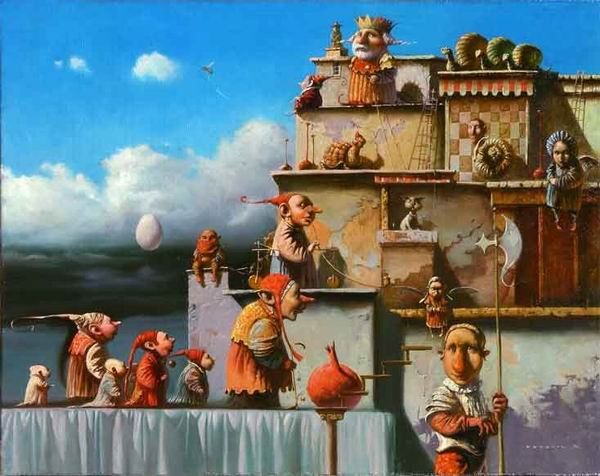
Mystery and Fascination of Checkmate in Arts, Part 1
Checkmate is the ultimate moment of triumph, where one player corners the opponent's king with no escape, ending the game decisively. Its appeal, mystery, and fascination come from a blend of intellectual, emotional, and even philosophical elements that resonate deeply with players and spectators alike.
Delivering a checkmate is the culmination of a battle of wits. The process of setting up a checkmate—whether through a brilliant combination, a sneaky trap, or a slow, strategic squeeze—feels like solving a high-stakes riddle.
Here is a number of artworks featuring checkmate from my 9000+ chess art collection (there are about a hundred of them on the theme of checkmate)
 Checkmate, c.1790 (water color and ink over graphite on paper) by Thomas Rowlandson (British, 1756-1827)
Checkmate, c.1790 (water color and ink over graphite on paper) by Thomas Rowlandson (British, 1756-1827)
.
 Andrew Carrick Gow (British, 1848-1920), Checkmated
Andrew Carrick Gow (British, 1848-1920), Checkmated
.
 Check to the Red King! In this political cartoon from 1917, allegorical female figures representing France (left) and Germany (right) play chess. France appears to be winning (hmm, sorry, no checkmate yet, but seems to be coming)
Check to the Red King! In this political cartoon from 1917, allegorical female figures representing France (left) and Germany (right) play chess. France appears to be winning (hmm, sorry, no checkmate yet, but seems to be coming)
.
 Checkmate by Luke Lawnicki (Polish artist residing in Ireland)
Checkmate by Luke Lawnicki (Polish artist residing in Ireland)
.
 Lydia Janssen (American, b.1976), Checkmate 2006
Lydia Janssen (American, b.1976), Checkmate 2006
An abstract piece, characterized by a vibrant and chaotic mix of colors and shapes. The title might imply a strategic or final move, possibly hinting at the game of chess, though the abstract nature makes it open to interpretation. Seems to blend emotional expression with a nod to intellectual strategy. The presence of scribbled text and geometric elements adds to the complexity, inviting viewers to find personal meaning.
.
 Dragan Jovanovic (Serbian, b.1964), Checkmate (tempera on wood)
Dragan Jovanovic (Serbian, b.1964), Checkmate (tempera on wood)
.
 Checkmate by Robert Inestroza (New York, 1966, now based in France)
Checkmate by Robert Inestroza (New York, 1966, now based in France)
A thought-provoking piece using symbolic imagery to convey deeper meaning. The painting depicts a figure wearing a dunce cap, standing behind a chain-link fence. The dunce cap traditionally symbolizes foolishness or punishment, suggesting the figure might represent someone who has been ostracized or judged. The fence acts as a barrier, possibly indicating confinement or separation from the outside world, represented by the green curtain being pulled aside by a hand. The chess reference in the title ("Checkmate") implies a decisive end or loss, perhaps hinting at a situation where the figure has been defeated. The use of muted colors and the solitary posture of the figure adds to the sense of isolation and resignation. This artwork seems to explore themes of entrapment, and the finality of certain life circumstances.
.
 Checkmate 4 was published by DC in September 2006 (the cover was penciled and inked by Lee Bermejo)
Checkmate 4 was published by DC in September 2006 (the cover was penciled and inked by Lee Bermejo)
.
 Checkmate (table sculpture) by John Cutrone (Brooklyn, 1955)
Checkmate (table sculpture) by John Cutrone (Brooklyn, 1955)
.
"In the name of God! You, demon, born in the dark! I seal you here! Checkmate!" – Arina Tanemura (a Japanese manga artist, illustrator, and character designer)
.
